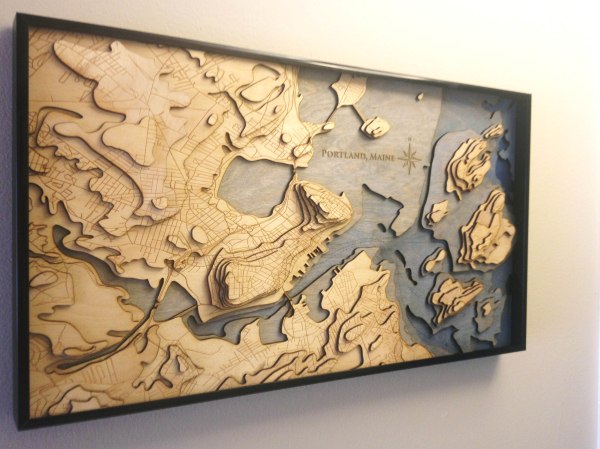For Christmas this year, [Scottshambaugh] decided to make his family a map of their hometown — Portland, ME. Using topographical map data, he made this jaw-dropping 3D map, and it looks amazing.
He started by exporting the elevation data of Portland using software called QGIS, a free opensource geographical information system — it’s extremely powerful software, but takes a bit to learn. Luckily, [Scott] made a tutorial for us. All you need to do is add the road data, put all the slices into an illustrator file, clean up some of the files, and you’re ready to start laser cutting.
He used 1/8th thick sheets of Baltic birch plywood, a staple material around laser cutters because it burns quickly and easily and is very flexible, which means that it’s harder to break. The map measures 12″ x 24″ — but once it’s laser cut, be ready for a multi-leveled jigsaw puzzle! The small pieces of elevation data can be very tricky!













